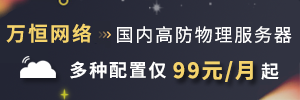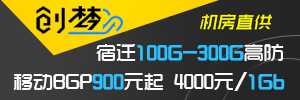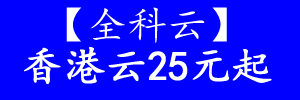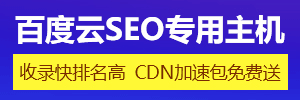CSS 垂直居中五种实现方法
脚本之家 / 编程助手:解决程序员“几乎”所有问题!
脚本之家官方知识库 → 点击立即使用
利用 CSS 来实现对象的垂直居中有许多不同的方法,比较难的是选择那个正确的方法。我下面说明一下我看到的好的方法和怎么来创建一个好的居中网站。
使用 CSS 实现垂直居中并不容易。有些方法在一些浏览器中无效。下面我们看一下使对象垂直集中的5种不同方法,以及它们各自的优缺点。(可以看看测试页面,有简短解释。)

方法一
这个方法把一些 div 的显示方式设置为表格,因此我们可以使用表格的 vertical-align property 属性。
<div id="wrapper">
<div id="cell">
<div class="content">
Content goes here</div>
</div>
</div>
#wrapper {display:table;}
#cell {display:table-cell; vertical-align:middle;}
优点:
content 可以动态改变高度(不需在 CSS 中定义)。当 wrapper 里没有足够空间时, content 不会被截断
缺点:
Internet Explorer(甚至 IE8 beta)中无效,许多嵌套标签(其实没那么糟糕,另一个专题)
方法二:
这个方法使用绝对定位的 div,把它的 top 设置为 50%,top margin 设置为负的 content 高度。这意味着对象必须在 CSS 中指定固定的高度。
因为有固定高度,或许你想给 content 指定 overflow:auto,这样如果 content 太多的话,就会出现滚动条,以免content 溢出。
<div class="content">
Content goes here</div>
#content {
position:absolute;
top:50%;
height:240px;
margin-top:-120px; /* negative half of the height */
}
优点:
适用于所有浏览器
不需要嵌套标签
缺点:
没有足够空间时,content 会消失(类似div 在 body 内,当用户缩小浏览器窗口,滚动条不出现的情况)
方法三
这种方法,在 content 元素外插入一个 div。设置此 div height:50%; margin-bottom:-contentheight;。
content 清除浮动,并显示在中间。
<div id="floater"></div>
<div id="content">
Content here
</div>
#floater {float:left; height:50%; margin-bottom:-120px;}
#content {clear:both; height:240px; position:relative;}
优点:
适用于所有浏览器
没有足够空间时(例如:窗口缩小) content 不会被截断,滚动条出现
缺点:
唯一我能想到的就是需要额外的空元素了(也没那么糟,又是另外一个话题)
方法四
这个方法使用了一个 position:absolute,有固定宽度和高度的 div。这个 div 被设置为 top:0; bottom:0;。但是因为它有固定高度,其实并不能和上下都间距为 0,因此 margin:auto; 会使它居中。使用 margin:auto;使块级元素垂直居中是很简单的。
<div id="content">
Content here</div>
#content {
position:absolute;
top:0;
bottom:0;
left:0;
right:0;
margin:auto;
height:240px;
width:70%;
}
优点:
简单
缺点:
IE(IE8 beta)中无效
无足够空间时,content 被截断,但是不会有滚动条出现
方法五
这个方法只能将单行文本置中。只需要简单地把 line-height 设置为那个对象的 height 值就可以使文本居中了。
<div id="content">
Content here</div>
#content {height:100px; line-height:100px;}
优点:
适用于所有浏览器
无足够空间时不会被截断
缺点:
只对文本有效(块级元素无效)
多行时,断词比较糟糕
这个方法在小元素上非常有用,例如使按钮文本或者单行文本居中。
哪个方法?
我最喜欢的是方法三,缺点不多。因为 content 会清除浮动,所以可以在它上面放置别的元素,并且当窗口缩放时,
居中的 content 不会把另外的元素盖住。看例子。
<div id="top">
<h1>Title</h1>
</div>
<div id="content">
Content Here</div>
#floater {float:left; height:50%; margin-bottom:-120px;}
#top {float:right; width:100%; text-align:center;}
#content {clear:both; height:240px; position:relative;}
现在你知道是怎么回事了,现在我们开始创建一个简单但是有趣的网站。最终的样子是这样的:

步骤一
以语义化标签开始是很好的。下面是我们的页面构成:
#floater/*把 content 置中*/
#contred/*centre 盒*/
#side
#logo
#nav/*无序列表*/
#content
#bottom/*放置版权等*/
这是我用到的 xhtml 代码:
A Centred Company
<div id="centered">
<div id="side">
<div id="logo">
<strong><span>A</span> Company</strong></div>
<ul id="nav">
<li><a href="#">Home</a></li>
<li><a href="#">Products</a></li>
<li><a href="#">Blog</a></li>
<li><a href="#">Contact</a></li>
<li><a href="#">About</a></li>
</ul>
</div>
<div id="content">
<h1>Page Title</h1>
Holisticly re-engineer value-added outsourcing after process-centric collaboration and idea-sharing.
Energistically simplify impactful niche markets via enabled imperatives.
Holisticly predominate premium innovation after compelling scenarios.
Seamlessly recaptiualize high standards in human capital with leading-edge manufactured products.
Distinctively syndicate standards compliant schemas before robust vortals.
Uniquely recaptiualize leveraged web-readiness vis-a-vis out-of-the-box information.
<h2>Heading 2</h2>
Efficiently embrace customized web-readiness rather than customer directed processes.
Assertively grow cross-platform imperatives vis-a-vis proactive technologies.
Conveniently empower multidisciplinary meta-services without enterprise-wide interfaces.
Conveniently streamline competitive strategic theme areas with focused e-markets.
Phosfluorescently syndicate world-class communities vis-a-vis value-added markets.
Appropriately reinvent holistic services before robust e-services.</div>
</div>
<div id="bottom">
Copyright notice goes here</div>
步骤二:
现在我们开始用一些基本的 CSS 来给页面添加样式。把以下代码放入在我们的 html 页面顶部被引入的 style.css。
html, body {
margin:0; padding:0;
height:100%;
}
body {
background:url('page_bg.jpg') 50% 50% no-repeat #FC3;
font-family:Georgia, Times, serifs;
}
#floater {
position:relative; float:left;
height:50%; margin-bottom:-200px;
width:1px;
}
#centered {
position:relative; clear:left;
height:400px; width:80%; max-width:800px; min-width:400px;
margin:0 auto;
background:#fff;
border:4px solid #666;
}
#bottom {
position:absolute;
bottom:0; right:0;
}
#nav {
position:absolute; left:0; top:0; bottom:0; right:70%;
padding:20px; margin:10px;
}
#content {
position:absolute; left:30%; right:0; top:0; bottom:0;
overflow:auto; height:340px;
padding:20px; margin:10px;
}
在我们能够把 content 垂直居中之前, body 和 html 应该被拉伸到 100% 的高度。由于 height
在 padding 和 margin 之内,所以我们要把它们设成 0 以防止因为很小的 margin 出现滚动条。
floater 的 margin-bottom 是 content 高度(400px)的一半, -200px。
现在可以看到一下效果:

#centred 的宽度为 80%。这可以市网页随着显示器的大小而变化。一般称作流体布局。设置 min-width 和
max-width 以避免网页过大或者过小。 但是 IE 不支持 min/max-width。显然可以用固定宽度来代替。
因为 #centred 是相对定位的,在它里面我们可以用绝对定位来定位元素。设置 #content 的 overflow:auto;
以避免滚动条的出现。IE 不怎么喜欢 overflow:auto; 除非我们指定高度(不是 top 和 bottom 的定位,也不是 %)
因此我们给它指定高度。
步骤三
最后要做的就是再添加点样式,让页面好看点。从目录开始吧。
#nav ul {
list-style:none;
padding:0; margin:20px 0 0 0; text-indent:0;
}
#nav li {
padding:0; margin:3px;
}
#nav li a {
display:block; background-color:#e8e8e8;
padding:7px; margin:0;
text-decoration:none; color:#000;
border-bottom:1px solid #bbb;
text-align:right;
}
#nav li a::after {
content:'»'; color:#aaa; font-weight:bold;
display:inline; float:right;
margin:0 2px 0 5px;
}
#nav li a:hover, #nav li a:focus {
background:#f8f8f8;
border-bottom-color:#777;
}
#nav li a:hover::after {
margin:0 0 0 7px; color:#f93;
}
#nav li a:active {
padding:8px 7px 6px 7px;
}
需要注意的是 #centred 的圆角。 CSS3 中,应该有 border-radius 属性来设定圆角的半径(可参考 CSS3之旅: border-radius(圆角) - 糖伴西红柿)。现在的
流行的浏览器都还不支持,除非用 -moz(Molilla Firefox) 或者 -webit(Safari/Webkit) 前缀.

兼容性注意事项
如你所想,IE 是唯一添麻烦的浏览器。
#floater 必须指定宽度,否则在任意版本 IE 中,它都啥也不干
IE 6 中目录被周围太多的空间打断
IE 8 有多余空间(作者遗漏)
更多的想法
利用居中的网页可以做很多有意思的事情。我在重新设计 SWFObject Generator 2.0 (使用 SWFObject2.0 生成代码)使用了这个想法。这里有另外的一个想法。
资料
以下是我参考的一些资料,推荐阅读。
Understanding vertical-align, or “How (Not) To Vertically Center Content”
Vertical centering using CSS
Vertical Centering in CSS
糖伴西红柿说:
水平居中经常用,其实垂直居中也很有用的。平时用的最多的应该是方法五了,算是个小技巧吧。
相关文章
如何使用CSS的object-position实现图片在img标签中的定位
该文章介绍了CSS中的object-position属性,用于精确控制替换元素在容器内的位置,通过指定水平和垂直方向的偏移量,可以实现精准定位2024-11-08- 文章主要探讨了CSS Grid布局在Internet Explorer(IE)中的不兼容问题,并提供了具体的解决方案和最佳实践,文章首先介绍了CSS Grid布局的基本概念和与传统布局方法的区别,然2024-11-08
 本文介绍了CSS实现圆角渐变边框的方法,首先设置元素边框为1像素宽度,样式为实线,颜色为透明,然后设置元素边框圆角为10像素,再设置背景剪裁区域和背景绘制区域为内边距和边2024-10-29
本文介绍了CSS实现圆角渐变边框的方法,首先设置元素边框为1像素宽度,样式为实线,颜色为透明,然后设置元素边框圆角为10像素,再设置背景剪裁区域和背景绘制区域为内边距和边2024-10-29 在CSS布局中,实现元素左右排列有多种方式,Flex布局通过设置margin-left:auto或margin-right:auto实现元素靠右或靠左排列,Grid布局利用grid-template-columns和justify-self2024-10-29
在CSS布局中,实现元素左右排列有多种方式,Flex布局通过设置margin-left:auto或margin-right:auto实现元素靠右或靠左排列,Grid布局利用grid-template-columns和justify-self2024-10-29- 在CSS中,隐藏滚动条同时保留滚动功能可以通过设置overflow属性和使用特定的CSS伪元素实现,例如,使用::-webkit-scrollbar针对WebKit浏览器,-ms-overflow-style适用于IE和Edg2024-10-29
- 本文详细介绍了CSS中的border属性及其相关特性,包括border-width(宽度)、border-style(样式)和border-color(颜色)等,此外,还讲述了如何独立控制元素的四个边的边框,2024-10-28
- 本文主要介绍了在网页开发中如何实现“回到顶部”的功能,通过HTML和CSS的编写,可以实现一个浮动在页面右下角的小图标,点击后即可回到页面顶部,这种设计可以提高网站的可用2024-10-28
 盒子模型是网页布局的基础,包括边框、外边距、内边距和实际内容,通过CSS可以控制盒子之间的距离及其外观,如边框样式、边框颜色等,重要属性包括padding和margin,分别控制内2024-10-18
盒子模型是网页布局的基础,包括边框、外边距、内边距和实际内容,通过CSS可以控制盒子之间的距离及其外观,如边框样式、边框颜色等,重要属性包括padding和margin,分别控制内2024-10-18 盒子模型是网页布局的基础,包括边框、外边距、内边距和实际内容,通过CSS可以控制盒子之间的距离及其外观,如边框样式、边框颜色等,重要属性包括padding和margin,分别控制内2024-10-18
盒子模型是网页布局的基础,包括边框、外边距、内边距和实际内容,通过CSS可以控制盒子之间的距离及其外观,如边框样式、边框颜色等,重要属性包括padding和margin,分别控制内2024-10-18
CSS使用filter和backdrop-filter实现高斯模糊效果(示例代码)
本文详细介绍了CSS3中的两个实现高斯模糊效果的API:filter和backdrop-filter,filter可以直接在图像或背景图上添加多种效果,而backdrop-filter则用于在元素后的区域添加效2024-09-26































最新评论